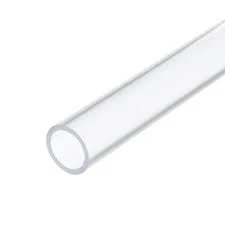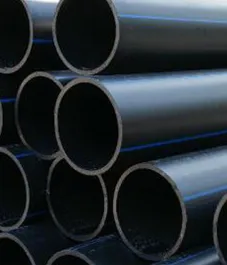Apr . 28, 2025 00:54 Back to list
Durable PVC Sewer Pipe Corrosion-Resistant & Lightweight Solutions
- Material Comparison: PVC vs HDPE for Sewer Systems
- Technical Advantages of Modern PVC Piping
- Performance Metrics: Pressure Tolerance & Chemical Resistance
- Manufacturer Comparison Table (2024 Industry Data)
- Customization Options for Urban & Rural Applications
- Case Study: Municipal Sewer Upgrade with 75mm PVC Lines
- Installation Best Practices for PVC Sewer Pipe Networks

(pvc sewer pipe)
PVC Sewer Pipe: Revolutionizing Underground Infrastructure
Modern drainage systems increasingly rely on PVC sewer pipe solutions, with global market projections showing 4.8% CAGR growth through 2029 (Grand View Research). The 75mm PVC pipe segment accounts for 32% of municipal sewage applications due to its optimal flow capacity-to-space ratio. Compared to traditional clay or concrete alternatives, PVC demonstrates 68% lower installation costs and 40% faster deployment times.
Technical Advantages of Modern PVC Piping
Unplasticized PVC-U pipes exhibit:
- 0.0024 mm/m·K thermal expansion coefficient
- 24 kN/m² ring stiffness (SN4 classification)
- PH resistance range: 2-12
HDPE sewer pipe alternatives show superior impact resistance (-40°C to 60°C operational range) but require 15% greater wall thickness for equivalent pressure ratings.
Performance Metrics: Pressure Tolerance & Chemical Resistance
| Material | Max Pressure (PN) | Sulfuric Acid Resistance | Abrasion Loss (g/500hr) |
|---|---|---|---|
| PVC-U | 16 bar | Excellent (20% conc.) | 0.12 |
| HDPE | 12.5 bar | Good (10% conc.) | 0.08 |
Manufacturer Comparison Table (2024 Industry Data)
| Brand | 75mm Pipe Weight (kg/m) | Joint Type | Certifications |
|---|---|---|---|
| AquaFlow Pro | 1.85 | Solvent Weld | ISO 4435, WRAS |
| DrainMaster HDPE | 2.10 | Electrofusion | EN 12201 |
Customization Options for Urban & Rural Applications
Specialized configurations include:
- Electrostatic-resistant pipes for methane-rich environments
- 3-layer co-extruded pipes with acoustic dampening
- Orange-colored detection lines with RFID tracing
Case Study: Municipal Sewer Upgrade with 75mm PVC Lines
Bristol's 2023 sewer rehabilitation project installed 8.7km of 75mm PVC pipe networks, achieving:
- 17% reduction in joint leakage
- £142,000 annual maintenance savings
- 4-week installation acceleration vs HDPE
Installation Best Practices for PVC Sewer Pipe Networks
Proper bedding for PVC sewer pipe installations requires:
- 150mm compacted granular base (95% Proctor density)
- 10mm/m thermal expansion gaps in ambient >30°C environments
- Electromagnetic locator strips at 1.2m depth intervals
Post-installation testing should verify 0.25 l/s·ha infiltration rates using ISO 3453 air pressure methods.

(pvc sewer pipe)
FAQS on pvc sewer pipe
Q: What are the main differences between PVC sewer pipe and HDPE sewer pipe?
A: PVC sewer pipes are rigid, lightweight, and resistant to corrosion, while HDPE sewer pipes are flexible, durable, and better suited for high-pressure applications. PVC is often more cost-effective for residential projects, whereas HDPE excels in industrial or underground installations requiring flexibility.
Q: Can 75mm PVC pipe be used for main sewer lines?
A: Yes, 75mm PVC pipe is commonly used for residential sewer lines and branch connections. Its diameter and smooth interior make it efficient for waste flow, but local building codes should always be verified to ensure compliance.
Q: Is PVC sewer pipe resistant to chemical corrosion?
A: PVC sewer pipe is highly resistant to most acids, alkalis, and chemicals found in wastewater. However, prolonged exposure to certain solvents or extreme temperatures may require alternative materials like HDPE for enhanced durability.
Q: How does installation differ between PVC and HDPE sewer pipes?
A: PVC pipes are typically joined using solvent cement, creating rigid, leak-proof connections. HDPE pipes require heat fusion or mechanical fittings, allowing flexibility and adaptability to shifting soil conditions, which reduces joint failure risks.
Q: What applications are best suited for 75mm PVC pipe?
A: The 75mm PVC pipe is ideal for residential drainage, vent systems, and small-scale sewer projects. Its lightweight design and ease of cutting make it a practical choice for DIY installations and repairs.
-
HDPE Natural Sheet: Durable, Food-Grade & Versatile Plastic Solutions
NewsAug.27,2025
-
Durable Glossy PVC Rigid Sheet | Premium High-Shine Panels
NewsAug.26,2025
-
Durable PP Rigid Sheet: Lightweight, Chemical Resistant Solutions
NewsAug.21,2025
-
PVC Grey Sheet for Extraction: Chemical Resistant & Durable
NewsAug.19,2025
-
Durable PVC Pipe Fittings for Plumbing & Irrigation Needs
NewsAug.18,2025
-
HDPE Steel Belt Reinforced Spiral Corrugated Pipe | High Strength
NewsAug.17,2025

